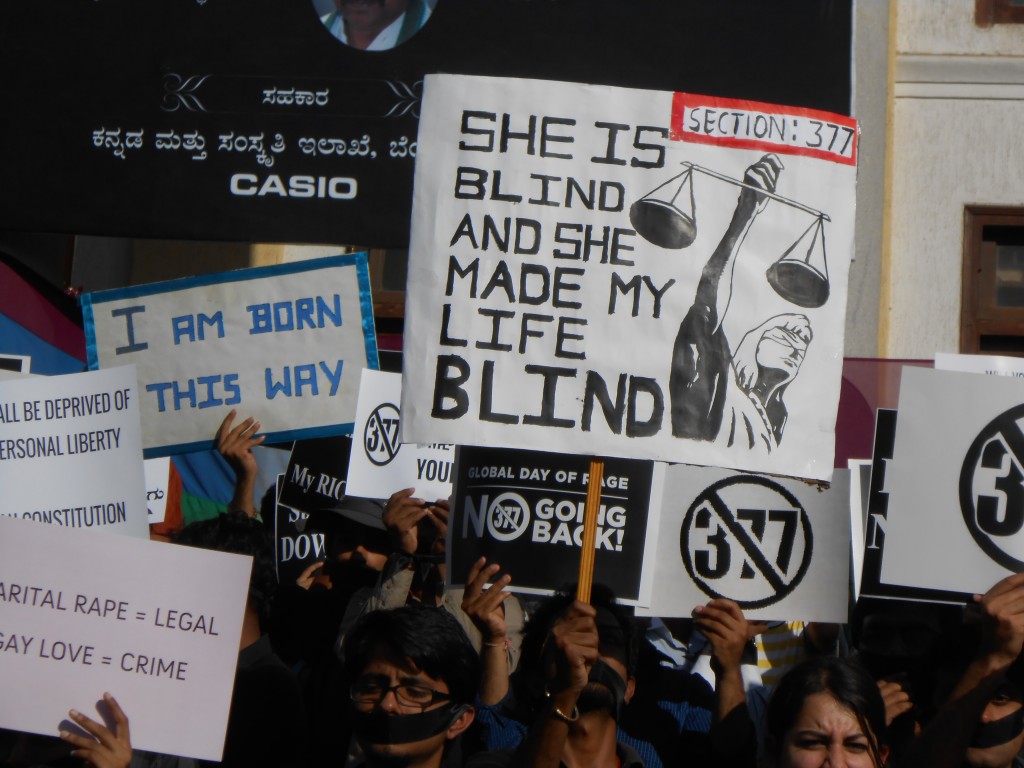Much has till now been written and said about the Sec 377 verdict by the Supreme Court and the easy way it chose by putting the ball in Parliament’s court by saying that it is the prerogative of the legislature to make/amend laws. The doctrine of separation of powers was put as the basis for showing such a rare instance of judicial restraint. Interestingly, that’s not how the same court has worked in the past. By Supreme Court’s own reckoning, both the constitutional principles of ‘judicial review’ of the laws as well as ‘separation of powers’ between the three organs of the state is recognised as the basic structure of the constitution of India. Though, both the doctrines are antithetic to each other. It is therefore the duty of the courts to draw a balance between the two. In cases such as that ofVishakha(1997) orGovind(1975), the SC has gone to the extent of filling up the vacuums in the legal system through its supply of informal changes either into the constitutional framework or elsewhere in the legal framework of the country. For example, inVishakhathe SC has framed guidelines for all the employers across the country for addressing complains from women employees in cases of their sexual harassment at workplace. While in Govind’scase, the right to privacy which was originally never a fundamental right within the constitution, the Supreme Court creatively added this right within the meaning of Right to Life under Article 21.
It is to be noted that the thrust of the original petition before the Delhi High Court (upon which this appellate judgment is based) is that Section 377 of IPC allegedly violates the following fundamental rights, namely, the right to privacy guaranteed under Article 21, the right to equal protection of the laws under Article 14, the right against non-discrimination under Article 15 (1), and the right to freedom of expression (including sexual and emotional expression) of the individuals under Article 19(1)(a) of the constitution. The judgment is constitutionally incorrect, because of two reasons:
- The instant judgment seems to be based on a literal and mechanical interpretation of the text of Section 377 as without discussing the merits of the arguments presented by the petitioners, the court had simply said that the LGBTs cannot claim that:
“Section 377 suffers from the vice of arbitrariness and irrational classification” (para. 42) and that “what Section 377 does is merely to define the particular offence and prescribe punishment for the same which can be awarded… if a person is found guilty” (ibid).
The court has not provided any basis as to how do it reach such a conclusion. The court has refused to look at the vagueness perpetuated by the phrase ‘carnal intercourse against the order of nature’. This vagueness, as established by the Delhi High Court’s judgment, clearly establishes the arbitrariness couched in the language of section 377, which is sufficient to establish the violation of the right to equality under Article 14. The right of the sexuality minorities to be treated equallyat parwith their heterosexual counterparts is conveniently ignored by the court. The court has failed to realise that, if every individual in this country is guaranteed with the right to sexual pleasure under Article 21, then the same right applies to the homosexuals as well. When the heterosexual sexual intercourse (i.e.,penial-vaginal intercourse) is legal then how can gay sexual intercourse (non-vaginal-penile intercourse,i.e., oral and anal intercourse) be illegal?
- The judges have failed to realise the negative impact caused by Section 377 onto the ‘right to privacy’ of the sexuality minorities. When adults of sound mind, consensually engage into non-vaginal-penile sexual intercourse in private, they do so because their right to privacy is a natural right and the same is guaranteed to them under the Article 21 of the constitution of India. On this issue of privacy, Section 377 raises the jurisprudential issue of ‘how can the state regulate the private life of the citizens in matters of sexual freedom and choices?’ Meaning thereby, how can the state decide an ideal form of sexual intercourse, as ‘the legal sexual intercourse’? This clearly violates the right to freedom of sexual and emotional expression of the individuals of this country (irrespective of whether it is a same-sex or a cross-sex sexual intercourse).
This judgment apparently conveys the double standards shown by the two judges of the Supreme Court, wherein, on one hand, in paragraph 42, they conclude that Section 377 is merely a statutory norm which is meant to regulate the sexual life of the individuals and the same doesn’t violate any of the alleged fundamental rights; whereas on the other hand, in the next paragraph it acknowledges that since, the LGBTs constitute of merely a miniscule minority, the same cannot be made a sound basis for declaring Section 377 violative of the alleged fundamental rights. This establishes how this judgment suffers from arbitrariness and inner-contradictions and hence, violates the essence of social inclusion, social justice and the equality clauses of the constitution.

